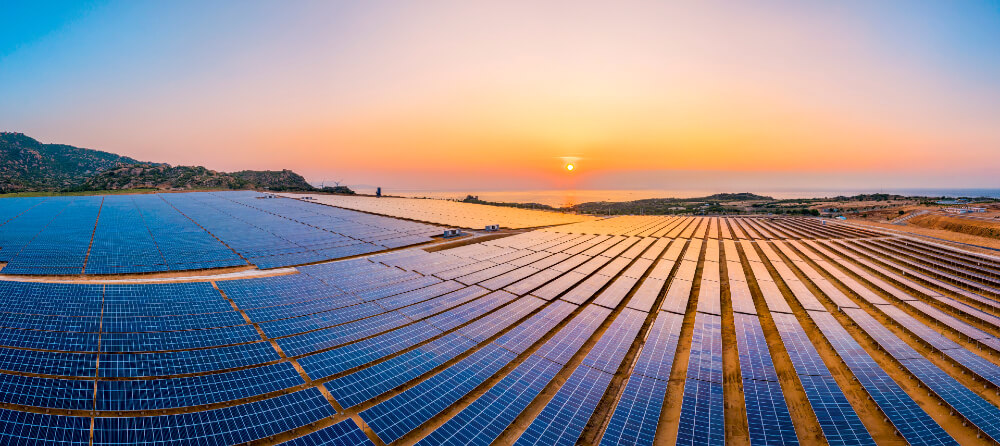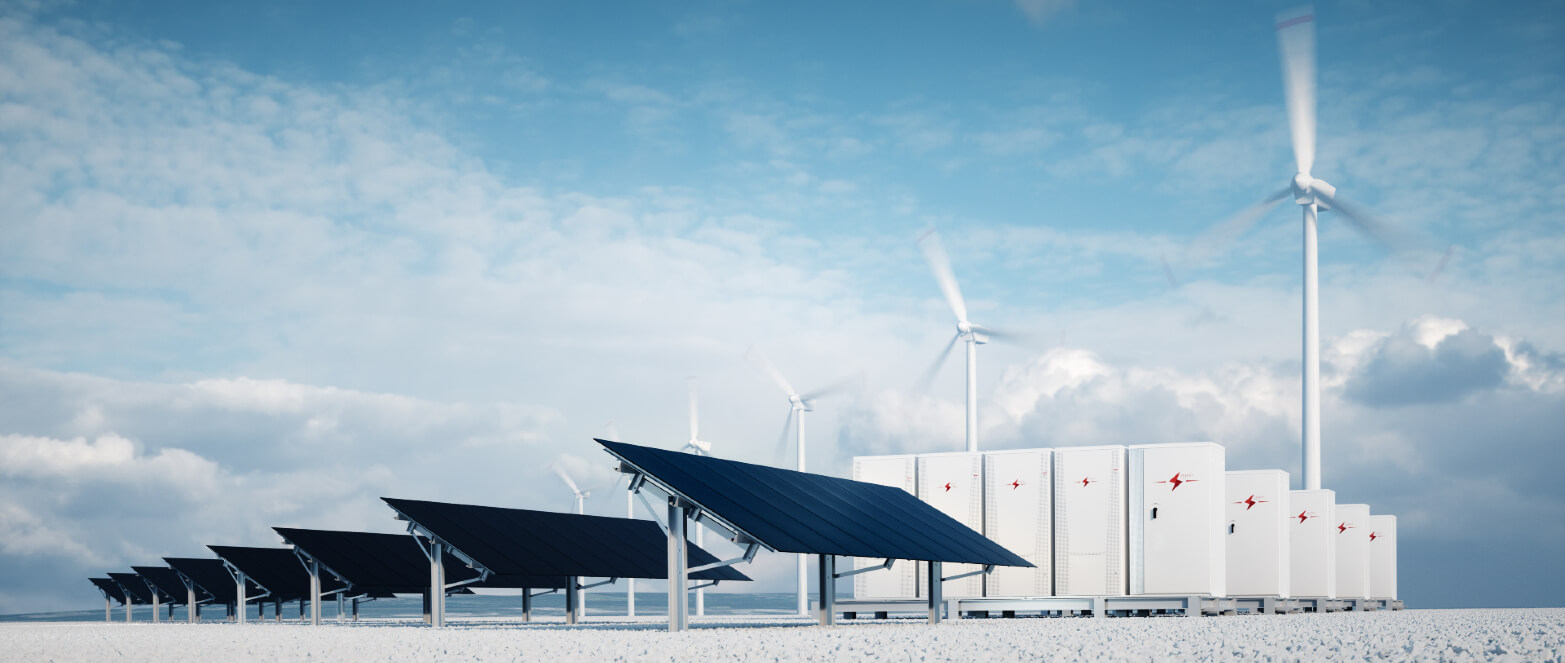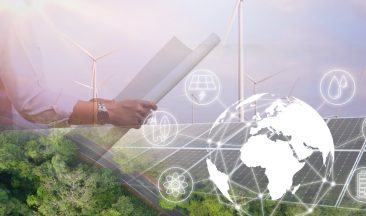Exploring ICL’s innovative contribution to the future of battery technology and the global transition to renewable energy.
The Transition to Renewable Energy and its Current Limitations
In the wake of centuries of detrimental environmental consequences caused by our heavy reliance on polluting fossil fuels, humanity is now embracing a remarkable transformation towards clean and sustainable energy sources. With the increasing efficiency and affordability of devices like solar panels and wind turbines, we are witnessing a remarkable shift in power generation. However, it is important to note that these technologies have certain limitations when it comes to providing a constant energy supply throughout the day.
While the latest sustainable energy technologies have proven to be quite reliable, they are still subject to the unpredictable forces of nature. Simply put, solar panels require optimal sunlight, while wind turbines rely on a steady flow of wind. While meteorological patterns can be reasonably forecasted on a larger scale, localized irregularities and unexpected weather conditions will inevitably occur.
Cloudy days and periods of calm can disrupt the availability of power. In particular, solar power, being influenced by daylight hours and seasonal variations, can only contribute to a partial solution for our renewable energy needs. Even countries located in deserts or near the equator, where there is abundant sunshine for extended periods, cannot solely rely on solar energy without implementing energy storage solutions to complement it.
The Requirement for Flexible 24-Hour Energy
In contrast to a green energy plant, an old-fashioned coal-fired power station can theoretically generate uninterrupted power on a 24-hour basis and react easily to surges in user demand. Grid administrators know that there are peak hours for electricity consumption e.g. early evening and can plan energy output to accommodate projected rises in demand.
Stations are designed to easily generate more electricity as required. If an unexpected weather event like a heatwave creates a massive demand for energy-consuming air conditioning, power stations that burn fossil fuels can tap into on-site fuel reserves and immediately increase output.
Traditional power stations offered a flexible and responsive solution to energy requirements (at least by past design standards and technical capabilities) but convenience and dependability come with an unsustainable price tag.
- Fossil fuels are pollutants. The appalling environmental damage that comes with burning fossil fuels is compounded by the extraction and processing methods at source, as well as the strain that transporting fossil fuels in bulk places on the infrastructure.
- The second issue is that fossil fuels are commodities. Their price is potentially volatile and the supply chain can be disrupted, as in the 1973 oil crisis. When the UK’s national energy strategy was built around coal, successive British governments were hostage to the country’s powerful mining unions.
The current conflict in Ukraine and the recent commodities crisis demonstrated the ongoing vulnerability of the global energy supply chain. The crisis also exposed the dangers that sovereign states face when they depend on imported oil and natural gas. The surprise increases in energy prices increased the cost of living for hundreds of millions of people worldwide, shattering economic and cultural assumptions about the availability of cheap energy.
Batteries as an Energy Storage Solution
Locally generated sustainable energy offers an environmentally friendly alternative to the 20th-century model that is fundamentally flawed on several levels. Sustainable energy is achievable, but there are still many technical challenges to implementing a dependable green energy solution. A microgrid that draws on diverse clean energy sources like sunshine, wind, and tidal energy needs effective storage capacity to overcome intermittent power generation and to function reliably.
Surplus energy that is generated during optimal conditions needs to be readily available to the grid whenever user demand outstrips a fluctuating supply. Currently, the only realistic solution for effective green energy management is to store surplus green energy in high-capacity lithium-ion batteries.
If the transition to green energy is to be expedited as part of the wider goal of net zero carbon by 2050, there is an urgent need for game-changing innovation in additional technologies (such as liquid metal, bromine, flow batteries, and more).
The future of batteries is tied to the future of green energy and ICL is participating in this effort while promoting and developing bromine-based batteries for energy storage.

The Role of Batteries in Renewable Energy
As current renewable energy trends evolve into the mainstay of energy generation, the future of battery technology, and in particular the future of EV batteries, is a huge focus for R&D and business development. The predicted market for smart, high-capacity, long-term storage batteries over the next decade is enormous. It is essential to recognize that a renewable energy revolution cannot be achieved without the advancement of batteries or other suitable storage solutions.
Companies that can supply (safe and non-polluting) next-generation storage batteries with a long lifespan – and can do so at a competitive price – will be at the heart of the 21st-century global economy.
ICL’s Director of Energy Storage Solutions Zvi Yonatan is enthusiastic about how smart batteries could potentially improve our lives within the foreseeable future. “I can see a situation where every home or residential building comes with a high-capacity smart battery as a matter of course. It could be connected to rooftop solar panels, to a microgrid – and to any other energy-generating source. Maybe even to our exercise bikes!
A battery like that could sell stored power back to the national grid or local microgrid. The possibilities are basically endless. It just has to be completely safe (from the perspective of fire prevention) and cost-effective i.e. it will be cheap to manufacture and will last for decades.”
ICL and the Future of Batteries
ICL is one of the world’s leading producers of specialty minerals. The company’s access to stable long-term sources of bromine, phosphates, and high-purity phosphoric acid gives it a major advantage in the development of advanced battery technologies. ICL also has a deep culture of innovation and a longstanding corporate commitment to sustainability, including a commitment as a Science Based Targets Initiatives (SBTI) signatory to reduce 50 % of its carbon footprint by 2030.
The Role of Batteries in Decarbonization at ICL’s Sdom Site
The Dead Sea production site is ICL’s largest production site and produces potash, bromine, chlorine, magnesium salts, table salt, and metallic magnesium. Also, a combined cycle power plant based on natural gas operates on the site. Since the site is a large consumer of energy, the amount of CO2 emissions at the site is high and comes to about one million tons per year.
As part of the strategic effort to reduce carbon emissions, ICL has initiated, and is promoting, a project that includes solar electricity generation as well as electricity (batteries) and heat storage facilities. The goal is to achieve net zero carbon emissions by the year 2050. A significant aspect of the project is the installation of electricity storage batteries. Project managers are evaluating several experimental technologies, including those developed by ICL, with a view to integrating them into the project.
More on the subject:
Bromine Based Flow Batteries and Renewable Energy Storage Solutions
Sustainable Solutions for Energy Storage: Batteries, the Path for a Renewable-Powered World
LFP Batteries as Key to a Sustainable Future – Interview with Phil Brown
ICL: An Ongoing Commitment to Sustainability
ICL is playing a key role in the development of today’s and future battery technology and is tremendously excited about the possibilities that sustainable and affordable green energy presents. Improved battery technology has the potential to improve every life on the planet, whether it’s using solar power to generate energy for remote communities, reducing household energy bills for domestic consumers, or powering new sustainable industrial plants and businesses. Affordable green energy is the key to a better and more equitable future.
Safe, affordable, recyclable batteries with a long lifespan and minimal self-discharge, that also deliver high energy density and allow rapid recharging, have the potential to end our historical dependence on fossil fuels.
ICL is committed to channeling its resources and human expertise into developing concepts and products that contribute to a greener planet and a sustainable economy. Our investment in new battery technologies and decarbonization of Sdom site are just two aspects of ICL’s global operations. Contact us to learn more about how we are promoting sustainability and social responsibility.








